Pine, Cedar, or Reclaimed Barnwood? Each Tells a Different Rustic Story
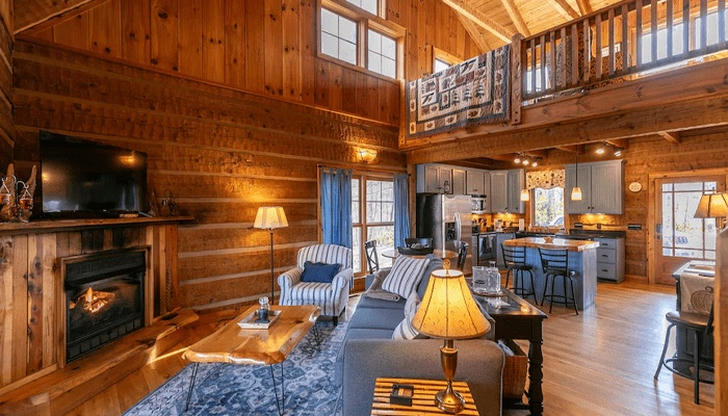
Walk into any rustic cabin or farmhouse-style home, and the first thing you notice probably isn't the couch, the lamps, or even the fireplace---it's the wood. Walls that glow with honey-colored pine, furniture that carries the deep red tones of cedar, or a table scarred with the history of reclaimed barnwood---these choices set the entire mood. Wood isn't just a material; it's the storyteller of rustic living.
When you're decorating or renovating, choosing the right wood can feel overwhelming. But pine, cedar, and reclaimed barnwood each carry their own vibe, personality, and even history. Let's break them down so you can match your cabin or rustic home not just with good looks, but with meaning.
1. Pine: The Accessible Classic
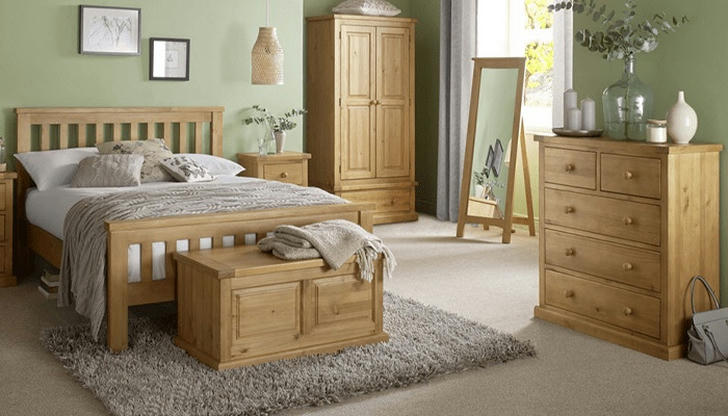
If rustic wood were a friendly neighbor, pine would be the one waving at you from across the fence. It's approachable, affordable, and versatile. Pine has been a go-to for generations, and for good reason. Its light color---often creamy white with soft yellow tones---makes it perfect for brightening up small cabins that might otherwise feel a little dark.
One of pine's most charming traits is its knotty look. Those little swirls and knots across the boards are almost like freckles---imperfections that add personality instead of taking away from it. Knotty pine paneling, once considered old-fashioned, is making a comeback because it instantly creates that nostalgic "cabin in the woods" feel.
Pine furniture is also easy to adapt. You can leave it raw for a simple, Scandinavian-inspired look, stain it darker to mimic oak or walnut, or paint it for a shabby-chic touch. It's soft enough to work with for DIYers, but here's the trade-off: it scratches more easily than harder woods. For a family cabin filled with kids, dogs, and ski gear, expect some dings and dents. The good news? Those marks often make it feel even more rustic, like each scratch is another line in your cabin's story.
2. Cedar: Nature's Built-In Protector
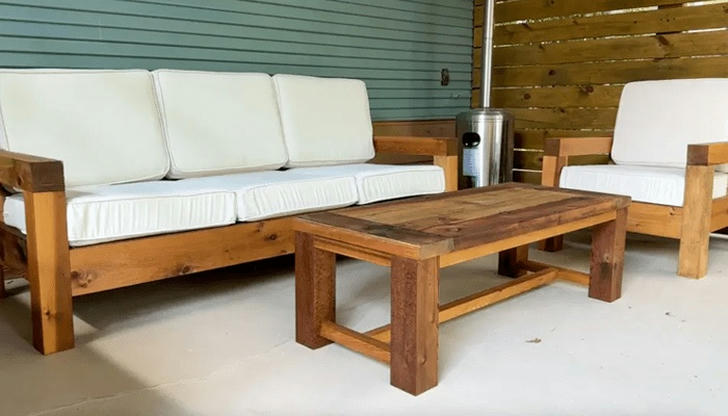
If pine is your easy-going neighbor, cedar is the reliable friend who always shows up prepared. Known for its rich reddish tones and distinctive scent, cedar has long been prized for its natural durability. In fact, many historic cabins and chests were built from cedar because its oils repel insects and resist rot.
Walk into a cedar-lined closet, and you'll instantly recognize the aroma---a sharp, earthy scent that feels both grounding and refreshing. That smell isn't just pleasant; it's functional. Cedar keeps moths away, making it a top choice for storage pieces like trunks, armoires, and closet paneling.
Visually, cedar has a bold character. Its reddish hues deepen with age, giving furniture and walls a warm, lived-in glow. If you want your rustic decor to lean more toward rich and dramatic rather than light and airy, cedar is the way to go.
One thing to keep in mind: cedar is softer than it looks. Like pine, it can scratch, but many homeowners see that as part of its rustic charm. It's a wood that feels alive, aging gracefully while adding character year after year. For decks, siding, or outdoor furniture, cedar is a strong choice because it naturally withstands the elements better than pine. Think of it as the wood that works hard outdoors and still looks good inside.
3. Reclaimed Barnwood: History in Every Plank
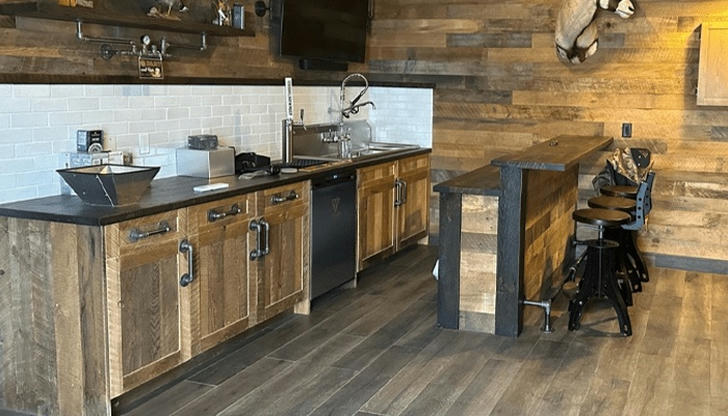
And then there's reclaimed barnwood---the storyteller of the bunch. Unlike pine or cedar, which you buy freshly milled, barnwood comes with a past. Each board has already lived a life, often as part of old barns, fences, or factories. When you use reclaimed wood, you're not just decorating; you're preserving history.
The look of barnwood is unmistakable: weathered gray tones, nail holes, saw marks, and irregular textures. No two planks are alike. This uniqueness is what makes reclaimed wood so sought after in rustic design. A barnwood dining table doesn't just serve meals---it sparks conversations. Guests can literally see the decades of wear that no stain or faux finish could ever replicate.
Reclaimed barnwood is also an eco-friendly choice. Instead of cutting down new trees, you're giving new life to lumber that might otherwise be discarded. For many cabin owners, that sustainable angle adds a deeper sense of connection to nature.
The catch? Reclaimed wood often comes at a premium price. The process of salvaging, cleaning, and preparing it for new use takes time and care. But for those who want their rustic home to feel one-of-a-kind, the investment pays off. Imagine walking across barnwood floors and knowing each creak has been earned over a century of use. That's rustic authenticity at its finest.
4. Which One Fits Your Story?
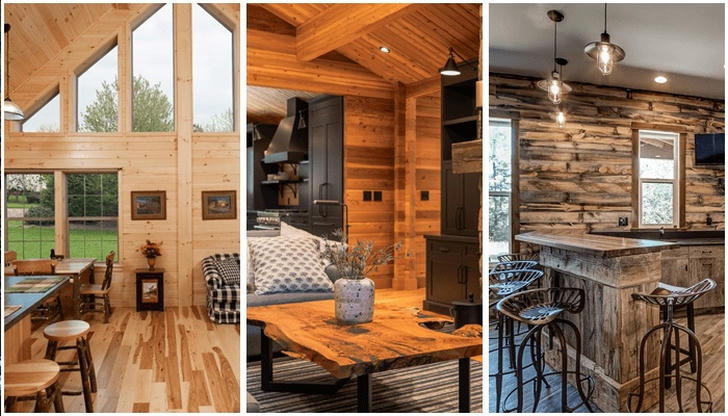
So how do you choose between pine, cedar, and reclaimed barnwood? It really depends on what story you want your cabin or home to tell.
Choose Pine if you want light, welcoming spaces with a touch of nostalgia. Great for DIY projects and budget-friendly renovations.
Choose Cedar if you value durability, rich color, and that unforgettable scent. Perfect for creating warmth and warding off insects naturally.
Choose Reclaimed Barnwood if you want history, character, and a truly unique rustic aesthetic. Ideal for statement pieces and eco-conscious design.
Some homeowners even mix them. A pine-paneled wall paired with a reclaimed barnwood mantel, or cedar trim around pine furniture, creates layers of texture and depth. Rustic doesn't mean uniform---it means personal.
5. The Final Word
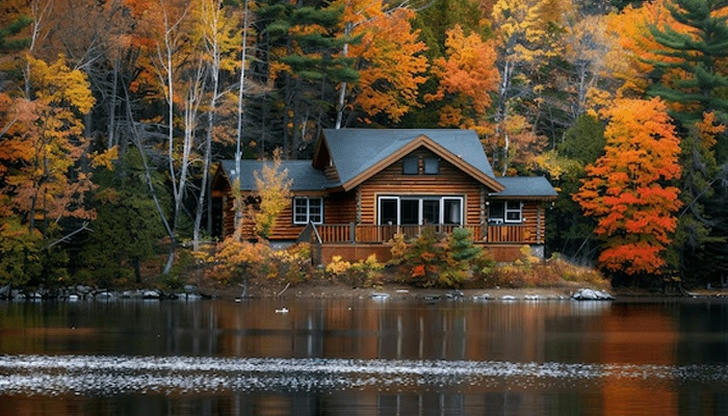
Cabin decor is often about more than style---it's about connection. Pine brings a sense of lighthearted charm, cedar carries natural strength and richness, and barnwood delivers history and authenticity. Each has its quirks, its beauty, and its story.
When you sit down in a rustic cabin surrounded by wood, you're not just seeing walls and furniture. You're experiencing a mood, a memory, and a tradition that continues to grow. Choosing the right wood is choosing what kind of story you want your home to tell---not just today, but for decades to come.
